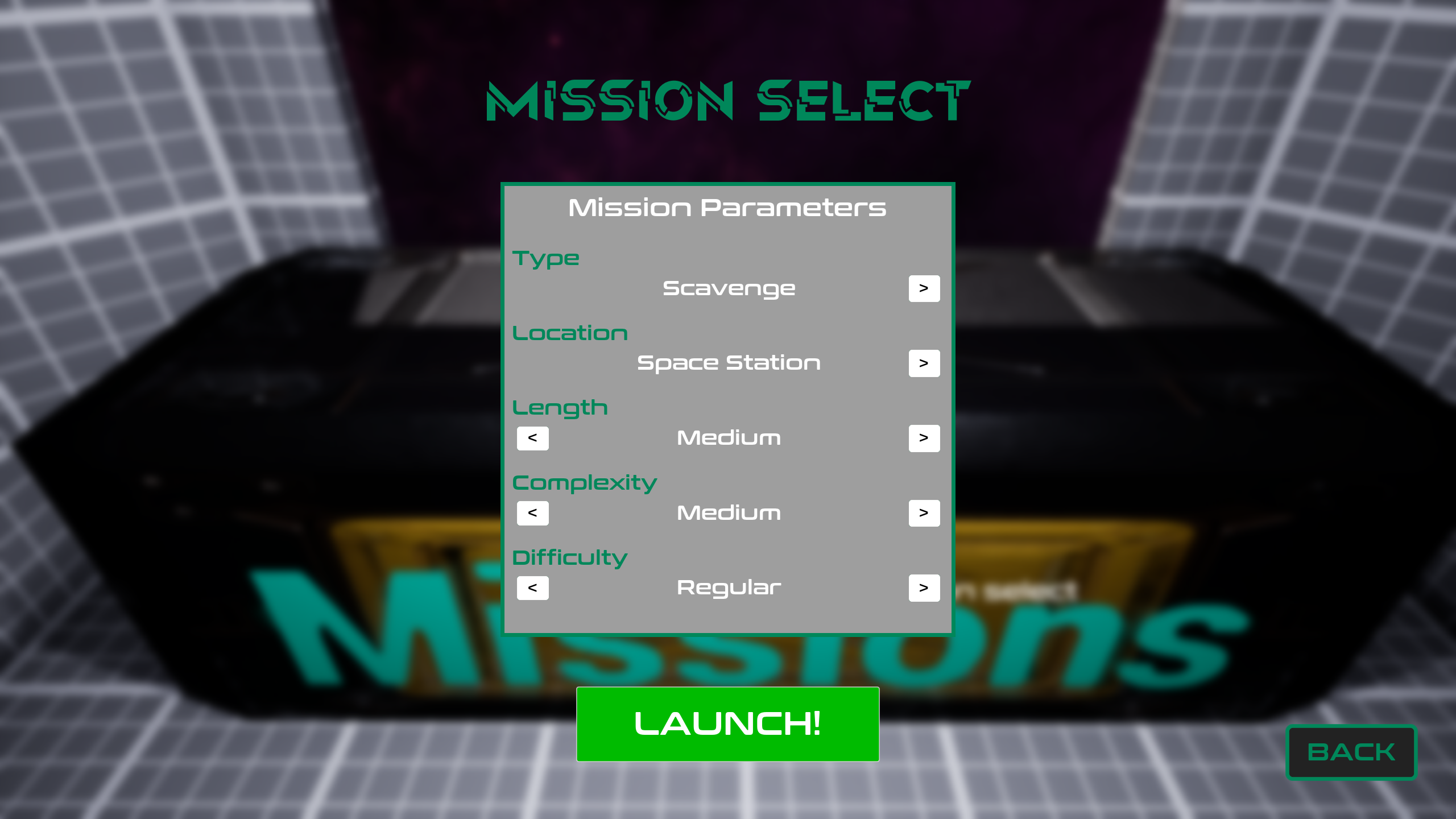Replayable Looter Shooter
Replayable Looter Shooter is a prototype for a first-person shooter focusing on replayability through mechanics and gameplay design.
Replayability is an important feature in choosing which games I play, as I often play them for months or even years. Deep Rock Galactic and Risk of Rain 2 are two standout games that inspired me to learn more about replayability and how I can implement such features in my own games.
My aim for this prototype was to create the core loop and one complete mission type. I primarily explored gameplay and mechanics through design and implementation, however I also investigated other areas as required.
The final prototype includes mechanic such as a loadout system with structured unlocks, procedural level generation for alternative maps, and self-driven player goals.
Gameplay Trailer
Player Motivation
Loadout System
I found a large impact on replayability came through the loadout system. This used motivation and player goals to drive players to continue playing by providing them reasons to do so.
The loadout system allows players to customise their loadouts to fit their preferred playstyles, as well as try out alternative playstyles with different weapons or equipment.
Some weapons and equipment are locked initially and require the player to play the game and unlock them over time. This worked well to allow players to set their own goals and something to work towards.


These goals are not forced or in any specific order, allowing players to unlock the items they want, or skip items they do not want to unlock.
There are two currencies to unlock new equipment. The first is credits, which the player earns from completing missions and defeating enemies. Then there are level completion unlocks, which require the player to play a certain amount of missions before unlocking a weapon.
One further improvement I would have liked to add to this system would include upgrades to further alter the weapons functionality and characteristics, however this was out of scope for the project.
Short-Term Goals
While long-term goals such as unlocking weapons are good for replayability, it was important to give the player short-term goals to keep them engaged in the moment.
Killing enemies comes naturally as they pose a threat, and players often need to defeat them to survive and complete the mission. While they are fairly basic in this prototype, they still help the players see improvement over time, boosting replayability.
Players are rewarded with credits for killing enemies, which provides immediate positive reinforcement and reward for the players.


I also added loot caches throughout the mission which players can collect for bonus rewards. This rewards players for exploring their time spent exploring the level and visiting areas they may have otherwise ignored.
After playtests, I also added health and ammo pickups to these caches to give immediate value and help players with the increased time spent in a mission.
The increased exploration ultimately extended play sessions by providing motivated players with the tools and rewards to spend more time in game.
Missions & Game Loops
Missions
The mission I designed for the prototype is called Scavenge with the player being sent to a space station to gather valuable loot.
It has six objectives, which are fairly open to allow for procedural level generation. This also worked well to give players autonomy and help them feel in control. Completing missions rewards the player with credits
Completing missions rewards the player with credits which they can spend on unlocks back on their ship.


Game Loops
The core loop focuses on the actions players take when entering a new room. This includes entering the room, defeating enemies, collecting loot, completing objectives, and leaving the room.
Outside of missions, there is a larger gameplay loop which includes selecting loadouts, completing missions, earning credits, and purchasing new equipment.
This larger loop can easily be completed in one play session which boosts replayability as players can experience most core gameplay features each time they play.
Procedural Generation
Another factor that improved replayability was the usage of procedural generation in the level and mission design. This helped avoid gameplay feeling repetitive by seeing the same level over and over.
Another factor that improved replayability was the usage of procedural generation in the level and mission design. This helped avoid gameplay feeling repetitive by seeing the same level over and over.
This gave the player control over the size and difficulty of each mission depending on their desired challenge, and intended session length.

Project Report
 ×
×


